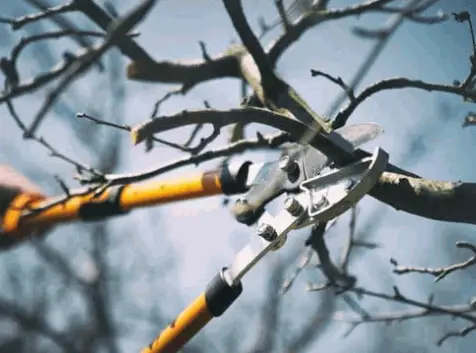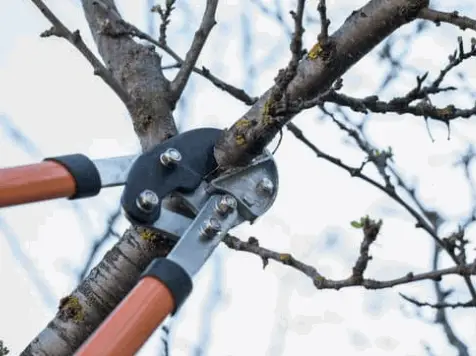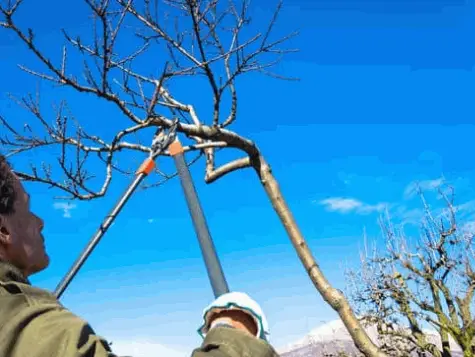Pruning is a critical aspect of tree care, and it plays a vital role in promoting healthy growth and maintaining the structural integrity of trees. Regular pruning helps to remove dead, diseased, or damaged branches, which can be a source of stress and infection for the tree. It also encourages the growth of new shoots and branches, which can improve the tree’s overall appearance.
However, the timing of pruning is crucial, as it can significantly impact the tree’s growth and health. Pruning at the wrong time of year can result in a loss of vital nutrients, cause stress to the tree, and even lead to disease or pest infestation. For example, pruning during the summer months can cause the tree to lose water and nutrients, weakening it and making it more susceptible to pests and disease.
To achieve optimal results, knowing when to prune your trees is essential. This requires a good understanding of the specific needs of different tree species and an awareness of the environmental factors that can affect their growth and development. At Equipment Girl, we know the right tools, and the right time for managing tree branches, and knowing when to prune branches to encourage new growth.
By following this advice, you can ensure that your trees are pruned at the right time, which will help to promote healthy growth, maintain the structural integrity of the tree, and improve its overall appearance.
Additionally, proper pruning can help to prevent safety hazards and reduce the risk of falling branches, which can cause property damage or injury to people and animals. Overall, following appropriate guidance on tree pruning can help you to ensure the long-term well-being of your trees, and protect your property and loved ones from potential harm.
Check out: Best Tools To Cut Tree Branches
Optimal Time To Prune Trees In The UK
In the UK, the dormant season is the optimal time to prune trees, typically from autumn to early spring. During this time, trees are in a state of rest, and their growth and development are minimal. This makes it an ideal opportunity to prune trees without causing any significant impact on their growth. In most cases, summer pruning is best avoided, but there are times when it is helpful to remove dead branches.
Generally though, the exact timing of pruning will depend on the specific species of the tree. For example, some trees, such as a summer birch and maple, should be pruned in late summer to early autumn to ensure it doesn’t bleed extensively, which can cause stress to the tree. In contrast, other trees, such as oak and beech, should only be pruned during winter when they are fully dormant.
When determining the right time for tree surgery, it is also essential to consider its long term health and any environmental factors that may affect its growth and development. For example, if a tree has been recently transplanted, it may be best to delay pruning until it has had time to establish itself in its new location.

Ongoing Tree Surgery Promotes Growth
Keeping trees healthy is the most important issue, especially with young trees, so in some instances, it is best to not follow the guidelines, especially if you have many trees at your premises. If you have additional concerns, discuss pruning with an expert, for your own safety, for the good of the trees, and in supporting any protected wildlife in your area.
Additionally, it is crucial to consider the size of the tree and the type of pruning required. Hiring a professional tree surgeon may be necessary for larger trees or more extensive pruning work to ensure you do the job safely and effectively.
Check out: Best Tool For Cutting Small Trees

Pruning Particular Trees
Here are some guidelines to help you determine the most effective point to prune your trees:
Pruning Deciduous Trees
Deciduous trees are trees that lose their leaves in the winter. It would be best to prune them during the dormant season, typically from late autumn to early spring. Pruning during this time is ideal for these trees because it minimises the impact on the tree’s growth and development.
However, waiting until the coldest part of winter has passed is best before pruning deciduous trees. Pruning during freezing temperatures can cause damage to the tree, and it may take longer for the tree to heal from the fresh wounds. Therefore, waiting until the weather has warmed up slightly is essential before beginning pruning work.
When pruning the most deciduous trees, removing any dead, diseased, or damaged wood is crucial. This will help to promote healthy growth and prevent the spread of disease throughout the tree. It is also essential to remove branches that may be rubbing against each other, as this can cause damage to the bark and leave the tree susceptible to infection.
Pruning Trees For Many Reasons
In addition to pruning for health reasons, many people also prune deciduous trees for aesthetic reasons. Pruning can help to improve the shape and appearance of the tree, and it can also help to reduce the tree’s overall size if it has become too large for its location.
While you can prune these trees during the dormant period, it is best to avoid the harshest winter months. Waiting until late spring, or carrying out the work in late summer can bring excellent results.
Pruning during freezing temperatures can cause damage to the tree, and it may take longer for the tree to heal from the pruning cuts.

Pruning Evergreen Trees
You should prune evergreen trees, such as a yew, after new growth, which means late winter or the start of spring is the best time for evergreen tree pruning.

Pruning Coniferous Trees
Coniferous trees, such as pine and spruce, differ from deciduous trees in that they do not lose their leaves in the winter. As a result, coniferous trees can be pruned throughout the year. However, the smartest point to prune coniferous trees is during the dormant season, typically from late autumn to the start of spring.
Pruning coniferous trees at this time is ideal because it minimises the tree damage risk. During this time, the tree is in a state of rest, and its growth and development are minimal. This means that pruning during this period is less likely to cause stress to the tree or interfere with its growth and development.
However, it is essential to note that coniferous trees should not be pruned during the hottest part of summer, as this can cause damage to the tree. Pruning during hot weather can cause the tree to lose more moisture than it can replace, leading to dehydration and stress.

Remove Branches That Rub Or Cross Each Other
As with deciduous trees, removing any dead, diseased, or damaged wood and crossing branches rubbing against each other is vital when managing coniferous trees. It is also important to thin out the tree’s branches to improve airflow and sunlight penetration, which can help to promote healthy growth.
Pruning Fruit Trees
Like many other tree types, you should prune fruit trees from September or October to the start of spring. However, the exact timing of pruning will depend on the type of fruit tree. For example, apple and pear trees should be pruned in late winter or the initial days of spring, just before they grow new leaves. This timing allows the tree to recover quickly and produce fruit in the coming season.
On the other hand, cherry and plum trees should be pruned in mid-summer to avoid the risk of silver leaf disease, a fungal disease affecting stone fruit trees. Pruning during mid-summer allows the tree to heal quickly and avoid spreading the disease.
In addition to the importance of removing rubbing or crossing branches seen with other tree types, and the need to promote airflow, proactive tree surgery helps you harvest fruit. By managing the size and shape of the tree, you can access more fruit readily, allowing you to enjoy a greater return.

Pruning Flowering Trees From Early Spring To Summer Makes Sense
Flowering trees are a beautiful addition to any garden, and proper pruning can help to maintain their condition and appearance. However, the timing of pruning is crucial for flowering trees, as it can directly impact the tree’s ability to produce flowers.
Flowering trees, such as cherry and magnolia, should be pruned immediately after flowering. This timing is essential because these trees develop flower buds for the following year soon after flowering. Pruning at other times of the year can remove these buds and reduce the tree’s ability to produce flowers in the next season.

Tree Work Is A Year Round Activity
In addition to timing, it is vital to consider the type of pruning required for flowering trees. Light pruning is typically recommended, as heavy pruning can remove too much of the tree’s growth and reduce its ability to produce flowers in the following season. Always be on the lookout for exposed wood, especially on lower branches.
It is also important to thin out the branches to promote airflow and sunlight penetration, which can help to promote healthy growth and flowering. Doing this at the start of summer pares back foliage, allowing for more sunlight to reach the bark, trunk, shoots and all aspects of the tree.
By pruning flower trees after blooming, it allows the tree to develop flower buds for the following year, and pruning at other times can reduce the tree’s ability to produce flowers. Proper pruning techniques, such as light pruning and removing large amounts of dead or diseased branches, can help to maintain the tree’s health and appearance while promoting healthy growth and flowering.
While each tree is unique, there is enough generality across trees that similar tree surgery procedures and timing apply across many tree types. Whether you are dealing with a horse chestnut tree, a birch or stunning evergreens, autumn or winter is likely the best time of year for pruning.
Spring and summer are the time for growth, so when you prune in autumn or winter, you help a tree heal faster, and minimise growth issues. Over time, this encourages foliage growth, a stronger trunk and trees that are healthier and more impressive.


